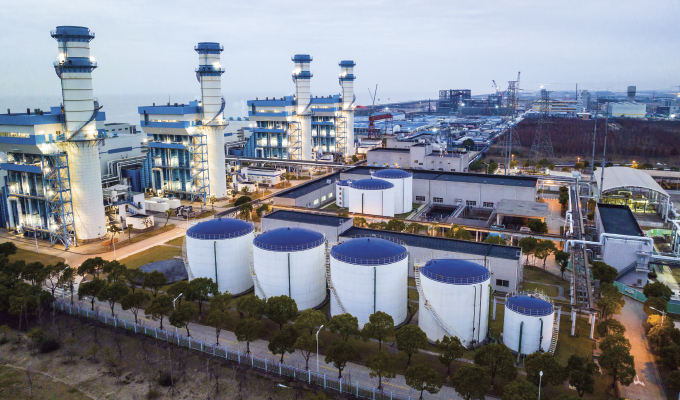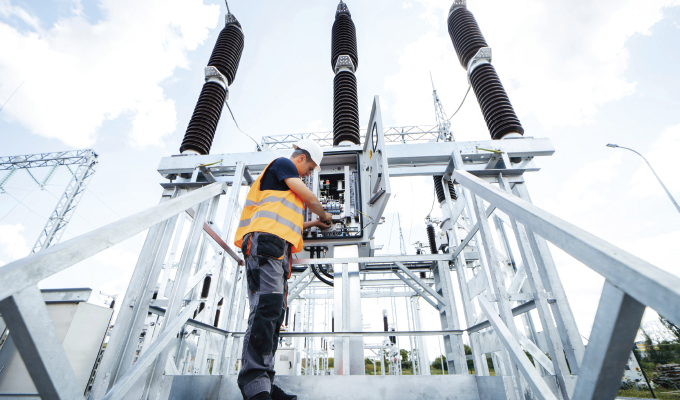Calibration is an essential activity in power plants and there are various reasons to establish a proper calibration process. Improving power plant efficiency is one obvious reason in order to ensure profitability, while proper calibration is also vitally important for safety. Furthermore, correctly calibrated emission monitoring equipment is essential in regulated areas. Various national and international regulations and standards require certain calibrations to be performed. Naturally, the reasons may vary in different types of power plants.
This series takes a brief look into the most common reasons to implement a modern calibration process in power plants, explores the typical issues of an outdated calibration process, and concludes with a short discussion of a modern calibration process and how to implement it.
COMMON REASONS FOR CALIBRATION
Power Plant Efficiency
Power plants have been proven to run more effectively and produce more energy and higher profits if the critical process measurements are more accurate. Regardless of how advanced the control system is, the system is only as good as the quality of the measurement data provided by the process control instrumentation. Inaccurate measurement data may cause the control system to make adjustments elsewhere in the process, causing additional strain on the assets and directly impacting their life cycle and maintenance costs.
Source fuel is the largest operating cost for a power generation unit and plants that have performance or heat rate improvement programs perform better than those that do not. Many of the initiatives identified to achieve the largest improvements are also capital intensive, requiring considerable time and resources. Addressing instrument calibration can be a much lower cost initiative but can still contribute to improved performance and heat rate.
In order to keep the process measurements accurate, a proper calibration process needs to be established. Calibration should be performed with high quality equipment that ensures proper accuracy and uncertainty. Likewise, the plant should utilize calibration management software to provide the highest level of traceability. The calibration process itself, commonly referred to as standard operating procedures (SOP), must be well planned to help ensure that the work is performed effectively. Using calibration management software to analyze data and perform history trend analyses helps with instrument prioritization and ensures the usually limited resources are used for the most important calibrations.
So efficacy in this context means being able to run the power plant in a more effective manner in order to produce more energy and earn higher profits. But efficacy also means that the calibration SOPs create the best outcome from normally limited available resources.
Plant Safety
Plant safety is an essential matter for power plants for many obvious reasons. Apart from regulatory requirements, safety is a very high, if not the most important, priority for plant. The power plant environment is a collection of systems to carry fuel, combustion air, and boiler water. In addition to the high-pressure steam hazards there are a variety of other conventional and chemical/physical hazards that must be controlled. Operating a high-pressure boiler-turbine combination involves a rigorous set of controls to ensure safe operation to prevent the boiler from exceeding pressure limits. Safely managing these risks requires critically accurate pressure and temperature measurement.
Depending on the plant type, there are a number of critical safety measurement points, which most often have redundant measurement circuits. As such, the number of critical safety measurement circuits to calibrate can be very high. Since the calibration of these critical safety circuits is controlled by regulations, it is best to ensure that these are calibrated at suitable intervals with proper uncertainty and also ensure that the calibrations are documented and reported in an appropriate way. Failing to do these regulated safety calibrations may in the worst case lead to the plant being fined or even shut down by authorities, or cause a harmful accident.
Regulations, Emissions, and Invoicing-related Measurements
There are regulations for continuous emissions monitoring systems in power plants. Depending on the plant type there may be series of gas analyzers which monitor the flue gas for example for; sulfur dioxide, nitrogen oxides, carbon monoxide, carbon dioxide, hydrogen chloride, airborne particles, and organic compounds, just to mention a few.
In addition to the continuous measurement of these emissions, the measurements must also be calibrated properly. If the power plant fails to perform these measurements or calibrations it may be shut down and/or heavily fined.
Although the actual fiscal metering and custody transfer is most often related to the oil and gas industries, power plants also have measurements that are used as the basis for invoicing or money transfers. It is obvious that if a large amount of invoicing is based on certain measurements, and its accuracy is of utmost importance. Any error directly affects the invoiced amount; therefore, a great deal of effort must be made to ensure that these measurements are at the highest level possible.
Non-critical Calibrations
The previous sections discuss some of the most critical calibrations in a power plant, but of course there are many plant measurements which require calibration. These may not need to be calibrated so often and the uncertainty requirements are not so critical. Even the documentation requirements of these calibrations may not be so stringent. However, they could have a significant effect on power plant performance and safety over time.

A LOOK AHEAD
The most important reasons to implement a modern calibration process are to improve calibration efficiency, save costs, obtain higher quality calibrations, and be compliant with related regulations. In next month’s conclusion of this article, we’ll explore the typical challenges faced by today’s power plants as well as what a modern calibration process should look like.
FOR MORE INFORMATION
Beamex is a trusted partner for calibration excellence, providing accurate measurements, reliable data, and traceability for a safer and less uncertain world. Beamex helps improve efficiency, ensure compliance, and increase safety with its comprehensive ecosystem of calibration solutions–from field calibration to workshop calibration, calibration management, and services. Through the company’s global reach, Beamex products and services are available in over ninety countries. For more information, visit www.beamex.com.
MODERN PUMPING TODAY, January 2024
Did you enjoy this article?
Subscribe to the FREE Digital Edition of Modern Pumping Today Magazine!


